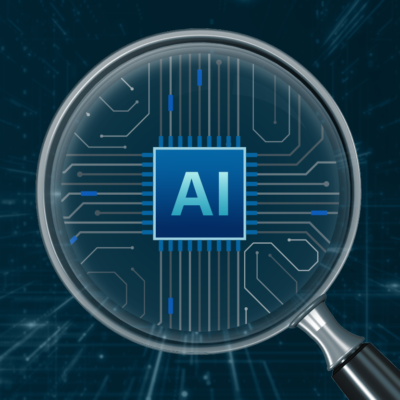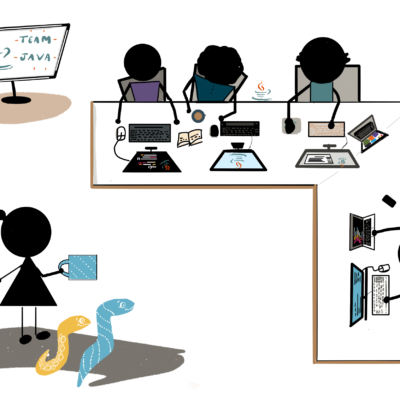Product leaders often think about growth in a linear fashion — more features, more markets, more users. But true innovation requires a more strategic and dynamic approach — one that considers not just when to expand, but also when to enhance and, crucially, when to let go.
At ISHIR, we help organizations think about their product portfolios in a fresh way through the 3E Framework: Expand, Enhance, Expire. This structured approach helps businesses make smarter decisions on investment, resource allocation, and innovation efforts.
1. Expand: Driving Growth and Market Reach
Expansion is the most intuitive part of product innovation — launching new features, entering new markets, and broadening use cases. Growth-minded leaders seek ways to capture more value by expanding their product’s reach.
- New Features – Building functionalities that address emerging customer needs.
- New Markets – Entering new industries, geographies, or customer segments.
- New Use Cases – Adapting existing technology to new problems and users.
Example: Slack started as an internal team chat tool but expanded into an enterprise collaboration platform by integrating automation and third-party apps.
However, expansion is not a one-size-fits-all approach. Products in the Explore phase (new product development) require a different mindset than those in the Enhance phase (mature products).
Success Metrics for the Explore Phase
For products in the expansion stage, success is often measured by:
- Adoption Rate – How quickly are users embracing the new product or feature?
- Market Penetration – How well is the product gaining traction within its target audience?
- Revenue Growth – Is the expansion effort translating into financial success?
At this stage, companies are placing bets on new opportunities, and metrics should reflect the ability to validate those bets quickly.
2. Enhance: Optimizing for Maximum Value
Expansion alone isn’t enough. Once a software product gains traction, the focus must shift to enhancing its value — making it more efficient, reliable, and customer-centric.
- Performance Optimization – Enhancing speed, reliability, and security.
- Customer-Centric Improvements – Addressing user feedback to refine UX/UI.
- Process Automation – Removing friction in workflows to improve efficiency.
Example: Apple’s iOS updates don’t just introduce new features; they also refine battery life, improve security, and enhance user experience.
Continuous Improvement Metrics for the Enhance Phase
Unlike the expansion phase, where adoption and penetration are key, the Enhance phase focuses on:
- Customer Satisfaction (CSAT) – Are users happier with the product over time?
- Retention & Engagement – Are customers continuing to use the product actively?
- Net Promoter Score (NPS) – How likely are customers to recommend the product?
These metrics ensure that enhancements are creating real value, not just superficial updates. Feedback loops are critical in this phase to iterate and improve based on user needs.
3. Expire: Knowing When to Let Go
The boldest decision a product leader can make is knowing when to walk away. Whether it’s retiring outdated features, sunsetting legacy technology, or phasing out an underperforming business line, expiration creates space for true innovation.
• Legacy Systems & Tech Debt – Maintaining outdated products drains resources.
• Underperforming Features – Removing clutter enhances the core experience.
• Shifting Business Priorities – Freeing up capital for higher-impact initiatives.
Example: Google is famous for discontinuing products that no longer fit its strategy — Google Reader, Hangouts, and others—freeing up resources for AI, cloud, and enterprise services.
How Expiration Affects Investment and Operating Models
The Expire phase has direct implications for capital allocation, operational models, and required skill sets:
- Capital Allocation: Should we reinvest in new innovation areas or optimize for profitability?
- Operating Models: Should we shift from an R&D-heavy approach to a leaner operational model?
- Talent & Skills: Do we need new expertise, or is it time to reallocate resources?
By being proactive in phasing out non-essential products or features, businesses can avoid being trapped in maintenance mode and instead invest in higher-value opportunities.
Applying the 3E Framework to Product Strategy
The 3E Framework is not a rigid process — different products will require different approaches based on their lifecycle stage. That’s why organizations need to:
- Recognize that different phases require different success metrics.
- Use feedback loops to guide decisions on expansion, enhancement, or expiration.
- Align investment, operating models, and team skill sets accordingly.
At ISHIR, we specialize in helping companies find the right balance between expanding, enhancing, and expiring — ensuring they remain agile and innovative in an evolving market.
How do you decide when to expand, enhance, or expire in your own product innovation efforts?
ISHIR will help you through 3E Framework in the Innovation Accelerator workshop to ensure you are leverage it with a balanced approach.
The post The Expand, Enhance, Expire (3E Framework) for Successful Product Innovation appeared first on ISHIR | Software Development India.





